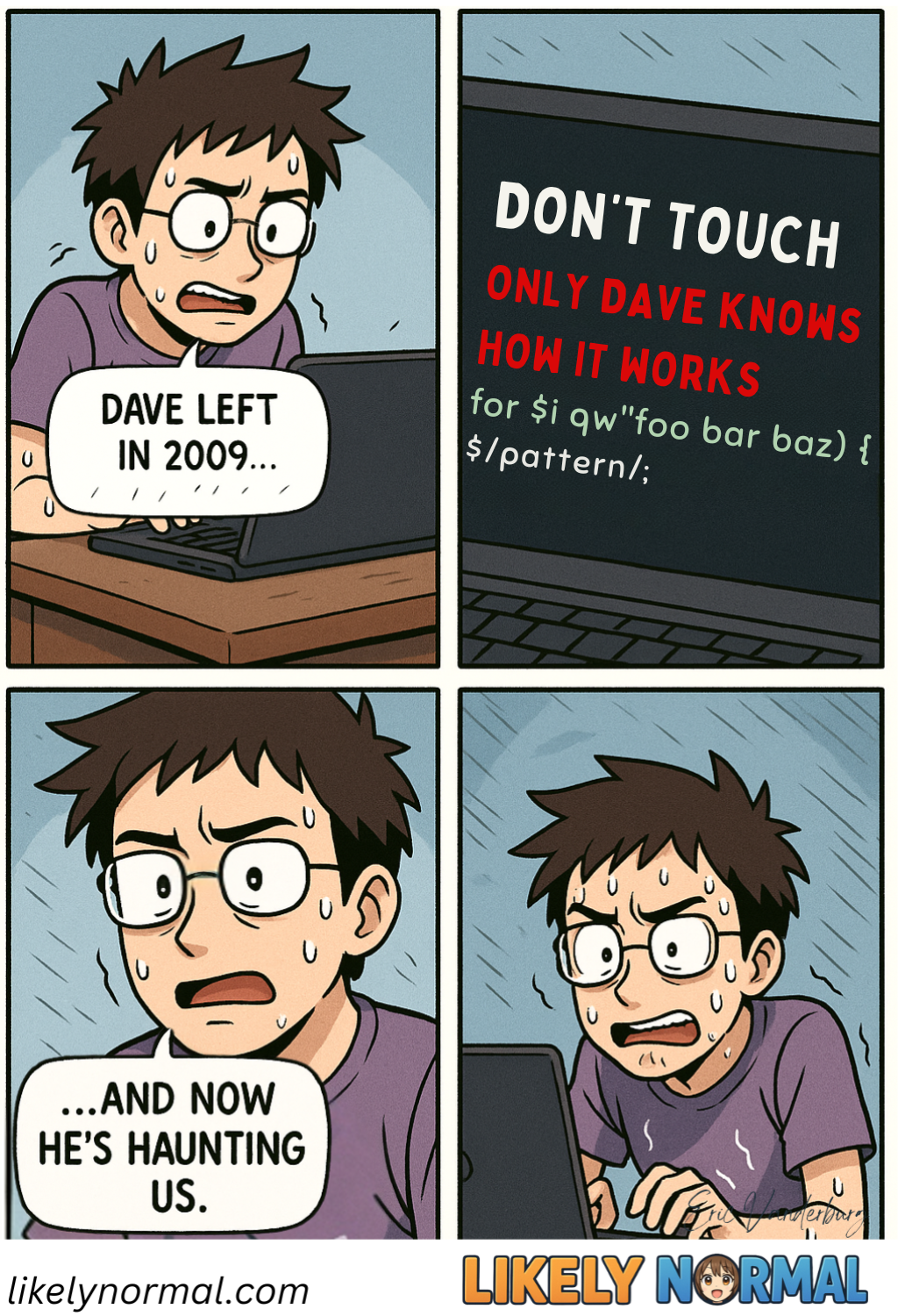Haunting
Deep in the bowels of every enterprise, there exists a piece of software so ancient, so cryptic, that it might as well be written in hieroglyphics. It’s the system that someone built in 1998—back when dial-up internet was cutting-edge and Y2K was the biggest threat on the horizon—and yet, against all odds, it’s still chugging along today, holding the entire company together like duct tape and prayers.
No one fully understands how it works. The original developer? Long gone—possibly retired, possibly abducted by aliens, definitely not returning your emails. The documentation? A single, message that reads “Do not touch!” And yet, this relic of a bygone era processes half your payroll, routes critical customer orders, and, if rumors are to be believed, may also be the reason the office coffee machine only accepts exact change.
Why Can’t We Just Replace It?
- The “If It Ain’t Broke” Principle – Sure, it’s held together by spaghetti code and existential dread, but technically it still runs. Replacing it would require modernizing, testing, and—worst of all—admitting that 25 years of patches and workarounds were a mistake.
- The Fear Factor – Everyone who’s ever glanced at the codebase has quietly backed away, muttering “Nope.” The last person who tried to “update” it triggered a cascading failure that locked everyone out of the supply chain for three days. (They now work in accounting and refuse to speak of it.)
- The “But What If?” Paradox – What if the system is the only thing preventing total chaos? What if it’s secretly the digital equivalent of the keystone in an arch—remove it, and the whole company collapses like a house of cards? Better not risk it.
One day, the system will fail—catastrophically, gloriously—and the company will grind to a halt. Executives will panic. Consultants will be summoned. Millions will be spent on a “state-of-the-art” replacement that, in 20 years, will also be a legacy nightmare. And thus, the cycle continues.

Discussion ¬